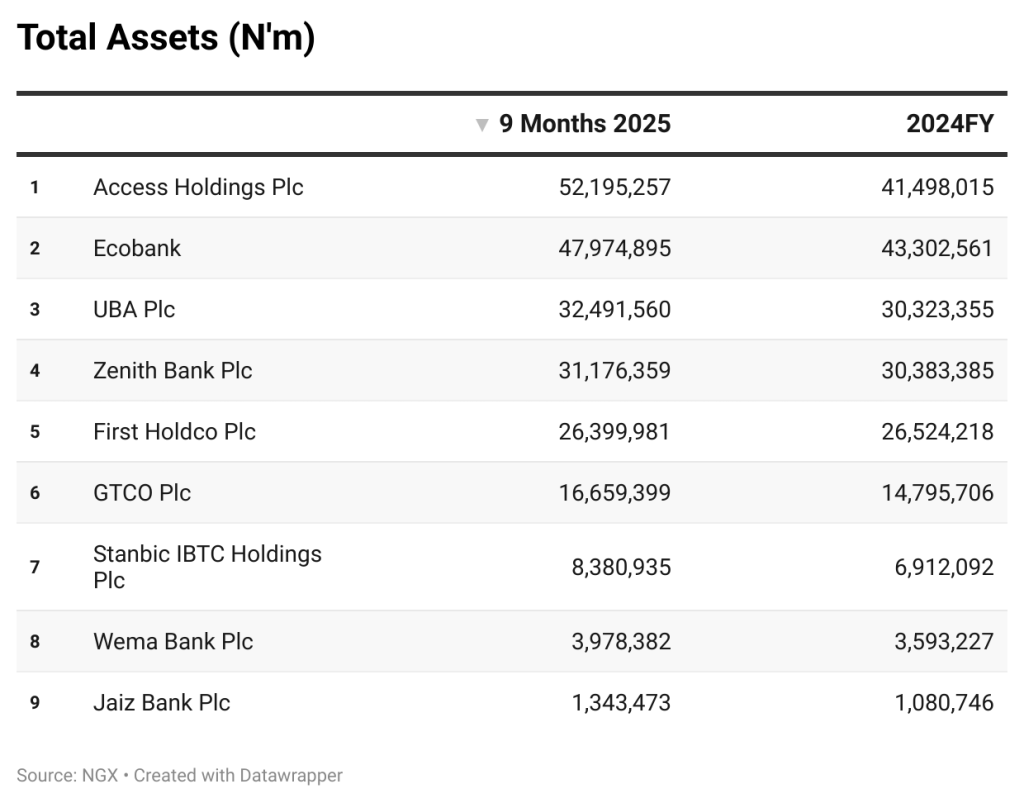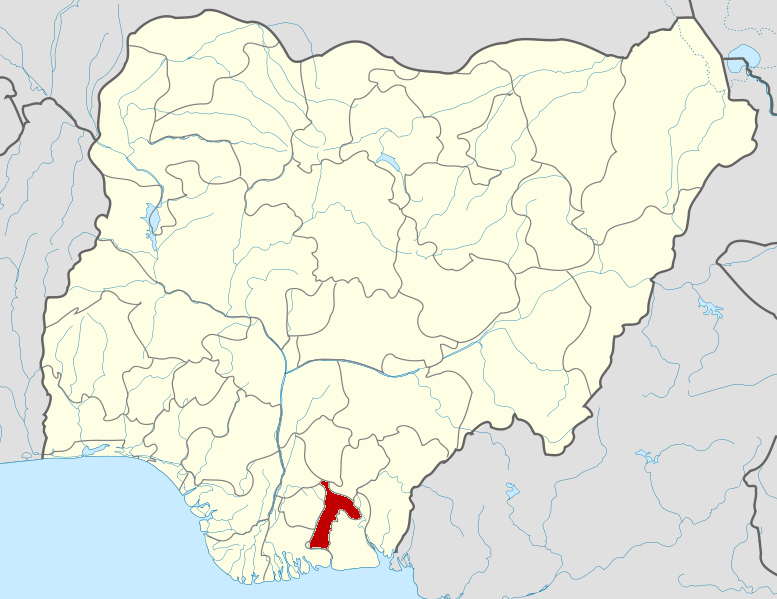
Kayode Tokede
On the back of intrinsic improvement in the overall economic outlook, the total assets base of Nigeria’s nine biggest banks expanded by about N22.1 trillion to N220.6 trillion in nine months of 2025 from N198.4 trillion declared in 2024 financial year.
The nine banks are: Access Holdings Plc, United Bank for Africa (UBA) Plc, Zenith Bank Plc, Ecobank Transnational Incorporated (ETI), and Guaranty Trust Holding Company (GTCO).
Others are: Wema Bank Plc, Stanbic IBTC Holdings Plc, First HoldCo Plc and Jaiz Bank Plc.

The likes of Access Holdings, UBA, Zenith Bank, ETI, control more than three-quarters of the country’s banking industry assets and are regarded as Domestic Systemically Important Banks (D-SIBs) because they are key to the stability of the nation’s financial services sector and the economy.
They are euphemistically referred to as Tier-1 banks, which underscore their strategic importance to the economy.
Analysis of the banks financial data released to the Nigerian Exchange Limited (NGX) and verified by the Central Bank of Nigeria (CBN), indicated that all the banks recorded considerable increase in assets, with the exception of First HoldCo, which suffered a marginal contraction.
The increase in total assets reflected substantial improvements in customers’ deposits across the banks, with total customers’ deposits for the nine banks closing nine months of 2025 at N141.72 trillion, about 19 per cent increase over N119.3 trillion reported in 2024.
A breakdown of the top three banks with highest total assets showed that Access Holdings maintained the lead from N41.5 trillion in 2024 to N52.20 trillion as of September 2025, followed by Ecobank with N47.97 trillion total assets as of September 2025, about 11 per cent increase from N43.3 trillion declared in 2024.
Also, Zenith Bank’s total assets moved from N30.38 trillion in 2024, to N31.2 trillion, up by nearly 3 per cent.
Analysts stated that the increase in the nation’s banking balance sheet was a good development for the economy and reflective of the intrinsic improvement in the overall economic outlook.
The Managing Director, HighCap Securities, Mr David Adonri, stated that the increased in balance sheet base was a “good development”.
He, however, noted the need for the quality of assets and the deployment of the assets as important factors in determining the state of the industry.
Adonri said, “The quality of the assets is also important for measuring the soundness of their balance sheet.”
He pointed out that with yield on public debt declining and absence of further foreign exchange (forex) windfall, banks are no longer posting extraordinary income. He said while the size of the banks are important to the economy, investors would be more concerned with the profitability of such assets.
“For the economy, bigger banks is excellent but right now for the investors, reduced earnings per share is worrisome,” Adonri said.
On his part, the Chief Executive Officer, Centre for the Promotion of Private Enterprise (CPPE), Dr. Muda Yusuf noted the banks’ balance sheet has correlation with the overall economic outlook.
He said, “This is perhaps an indication of the progressive recovery of the economy, because one of the ways in which we know that economic activities are gaining increasing momentum is through their financial transactions. So, it’s a reflection of the fact that the economy is recovering, financial and economic activities are increasing, which is reflecting in the financial transactions, which is also reflecting in the total assets of the banks.
“Secondly, it’s also a reflection of the fact that government revenues are also increasing, because these revenues are also largely within the banking system, and all the transactions, procurements and all of that also go through the banking system.
“So, generally the portfolios across practically all asset classes have increased significantly, and that is what is reflecting in the total assets of the banks. So, it’s something positive, it’s a very good indicator of economic activities and economic recovery”.
He, however, noted the need for a more active synergy between the banking sector and the real sector of the economy.
According to him, the linkage or synergy between the banking system and the real economy, especially small businesses, is still relatively weak.
“That is still a challenge, because we have a banking system that is generally risk averse, and the segments of the economy that are job elastic, that deliver more jobs, that deliver more inclusion, are generally sectors that are risky in terms of investment.
“So, we need to bring some alignment to that, to ensure that the banks align a lot more with the real sector of the economy and small businesses, that way we can see a banking system that is promoting development and not just promoting profitability. We need a banking system that will be ready to at least take some risk exposure, not a banking system that is completely risk averse.
Yusuf added, “A risk averse banking system is not good for economic development, it’s not good for entrepreneurial development, it’s not good for small and medium enterprises (SME_ development, and more importantly it’s not good for real sector development. So we need to have that alignment so that this growth in bank assets can rub off on the real sector of the economy.”




